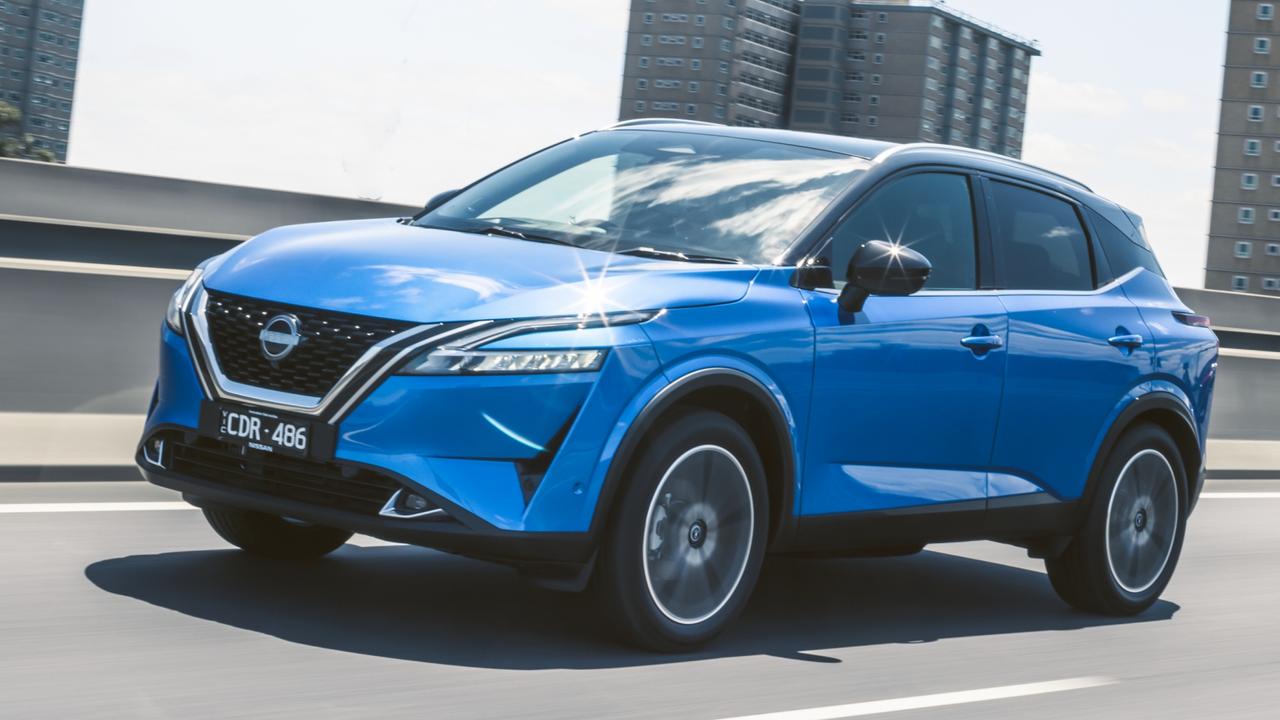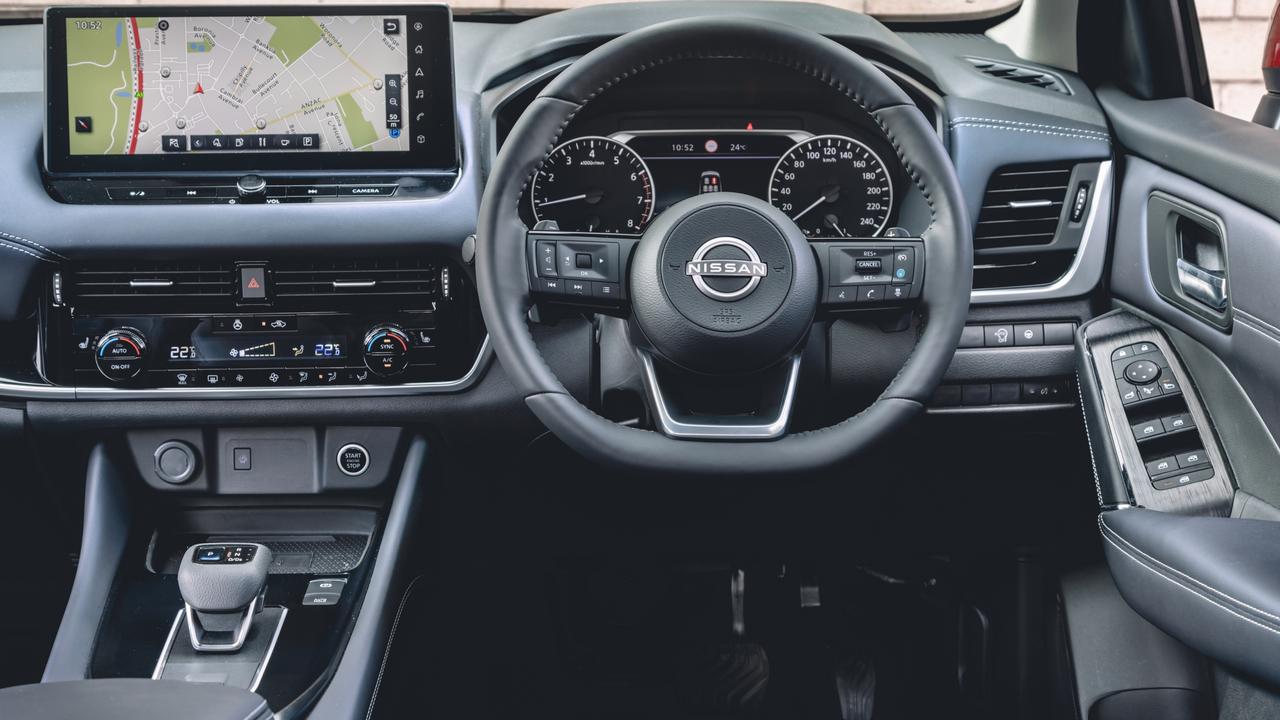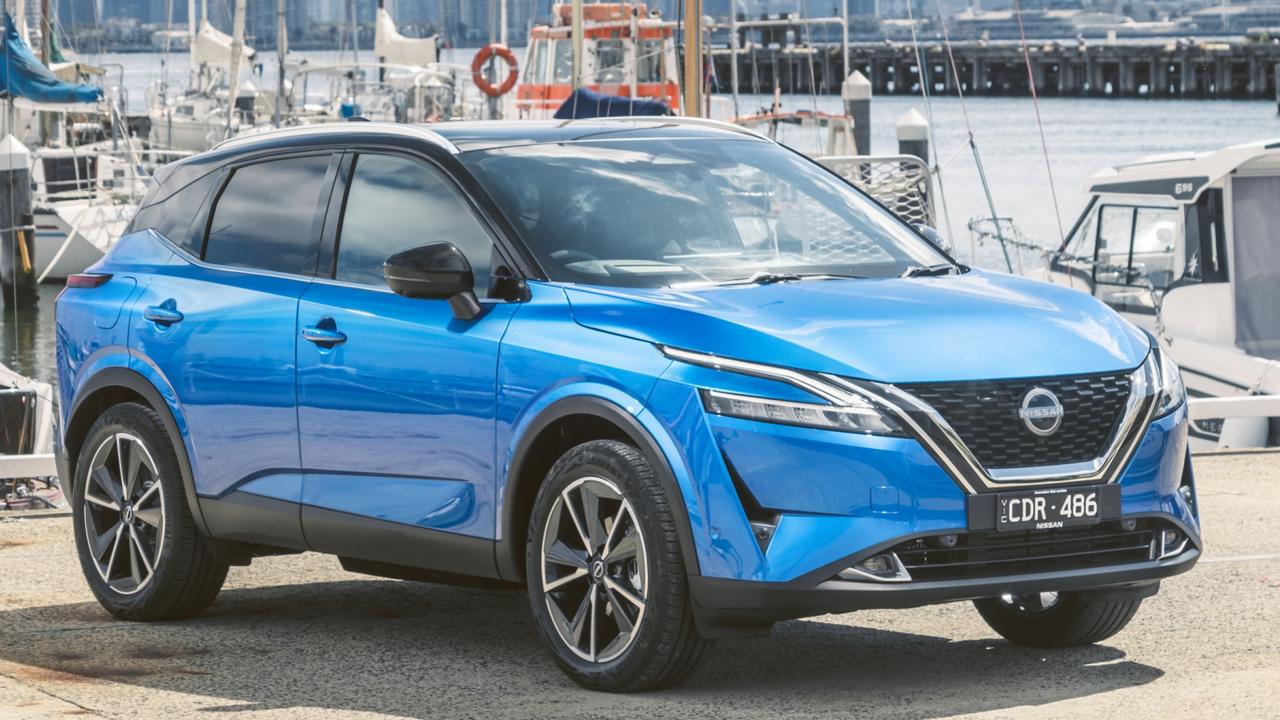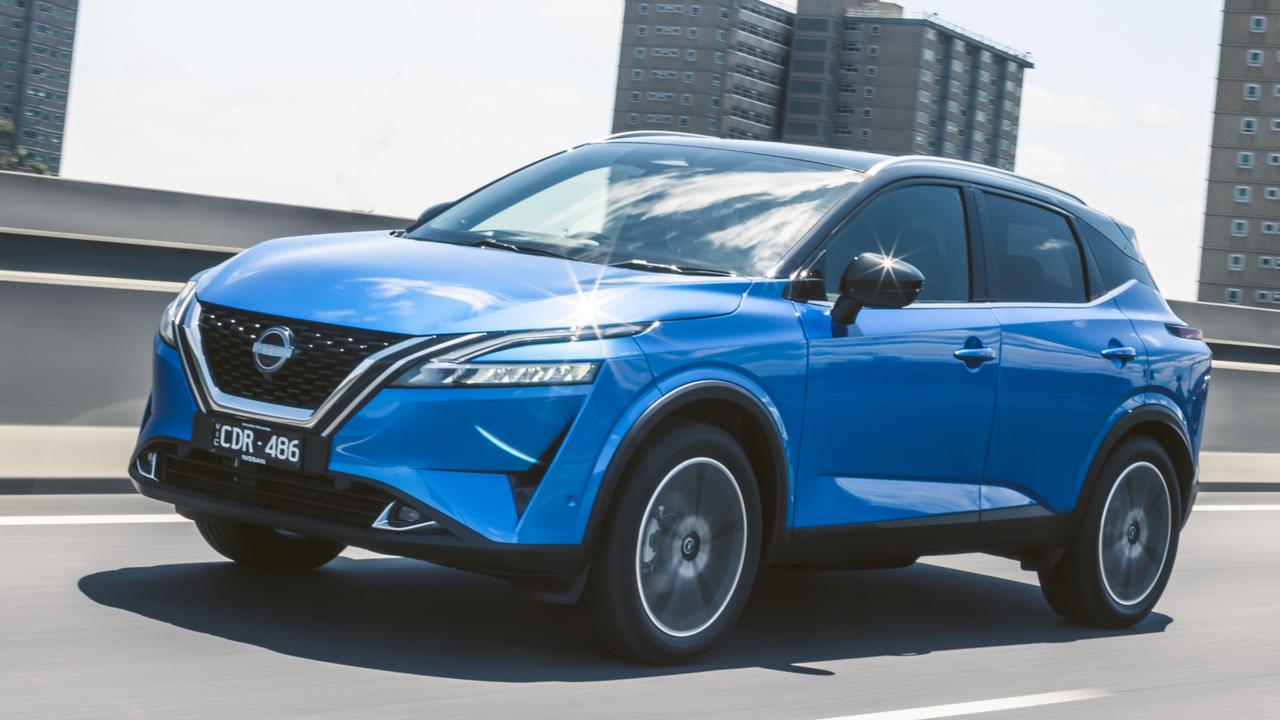Nissan Qashqai review: price, specifications, drive impressions
This small softroader has been a huge hit with buyers over the years and the latest version lifts the bar in terms of technology. But it comes at a cost.

Buyers shopping for a small SUV are spoiled for choice, so when a new model arrives it has to be good to make an impact.
Nissan’s latest offering has all the goodies, but they come at a cost.
VALUE
The Qashqai range starts at about $37,300 for the ST and ramps up to a steep $51,300 for the top-of-the-range Ti tested here. The cabin is well presented, with quality materials and surface treatments used throughout. There are soft diamond-stitched leather seats with heating and massaging functions, a large touchscreen, a digital instrument panel and head-up display. The 10-speaker Bose audio system is a cracker and there’s a wireless charging pad, but the wireless Apple CarPlay can be a bit glitchy. Overall, the Qashqai is a quality offering but more expensive than its main rivals. The warranty is the industry standard five years but services are pricey at almost $3000 over five years. The six-year service costs $1108.

COMFORT
There will be few complaints from passengers in the Qashqai. The new model is longer, wider and taller than its predecessor, which means rear leg, knee and head room is generous. There are individual vents for the second row and the rear doors open wider than most rivals, which makes it easier for parents strapping young ones into their capsules or booster seats. The driver’s seat is comfortable for long trips and there’s plenty of adjustment to suit bodies of all sizes. The cabin is impressively quiet, keeping engine, wind and tyre noise at a minimum. The luggage area is about par for the class and the rear tailgate can be opened with the swipe of a foot under the bumper – handy if your hands are full. The suspension is on the firmer side for a family SUV, and the ride can get a little lumpy on pockmarked suburban back roads.

SAFETY
The Qashqai scored one of the highest marks possible in independent crash tests, with 91 per cent for adult protection and 93 per cent for child protection. Airbag protection includes a centre airbag to stop the driver and front passenger clashing heads in a side-impact collision. All models have a comprehensive array of driver assistance tech, earning the car a 97 per cent score for “safety assist”. Tech includes auto emergency braking, lane-keep assist, blind-spot monitoring and rear cross-traffic alert with braking. The radar cruise control will keep a safe distance to the car in front and automatically slow to a stop in traffic. The blind-spot and lane-keeping functions can be a little off putting, though, as they brake as well as steer if you wander out of your lane.

ON THE ROAD
Family SUVs aren’t meant to be excitement machines and the Qashqai is no exception. The small 1.3-litre turbo punches above its weight and the CVT auto manages to keep it humming along nicely, but it’s no rabbit off the mark. The steering is well weighted and accurate and the suspension deals well with bumps taken at speed. It’s predictable and progressive when you press on through corners, leaning less than you might expect for a tallish vehicle with a higher centre of gravity. Official fuel use is 6.1L/100km and we managed to get pretty close to that on the freeway. Predictably, it’s thirstier in bumper to bumper traffic, where we saw mid-8s.

ALTERNATIVES
Toyota Corolla Cross Atmos, from about $50,300 drive-away. Hybrid engine delivers more grunt with less fuel use. Slightly plain cabin, solid road manners.
Mazda CX-30 G25 Astina, from about $47,700 drive-away. Significantly cheaper but slightly smaller. More powerful but thirstier engine. Quality finishes but a little dated inside.
Volkswagen T-Roc R-Line, from about $48,990 drive-away. Smaller, but cheaper, nicer to drive, with a more powerful engine and up-market cabin ambience.




